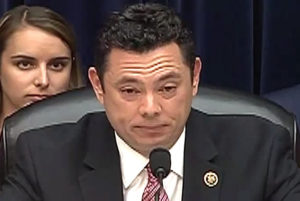Audio and Video content on Economist.com requires a browser that can handle iFrames.
NEW YORK — The first piece of news Americans woke up to on November 9th was that Donald Trump had been elected president. The second was that he owed his victory to a massive swing towards Republicans by white voters without college degrees across the north of the country, who delivered him the rustbelt states of Michigan, Wisconsin and Pennsylvania—all by one percentage point or less. Pundits had scoffed at Mr Trump’s plan to transform the Wall Street-friendly Republicans into a “workers’ party”, and flip the long-Democratic industrial Midwest: Hillary Clinton had led virtually every poll in these states, mostly by comfortable margins. But it was the plutocratic Donald who enjoyed the last laugh.
In the aftermath of the stunning result, statistical analysts homed in on blue-collar whites as never before. Although pre-election polls showed Mr Trump with a 30-percentage-point advantage among whites without a college degree, exit polls revealed he actually won them by almost 40 points. Unsurprisingly, the single best predictor identified so far of the change from 2012 to 2016 in the share of each county’s eligible voters […]
In August, when it looked likely that Hillary Clinton would win the presidency, Rep. Jason Chaffetz (R-Utah), chairman of the House Oversight Committee, insisted that no one should have any doubt that he would be tough on the next president when it came to personal financial entanglements.
“If you’re going to run and try to become the president of the United States, you’re going to have to open up your kimono and show everything, your tax returns, your medical records. You are just gonna have to do that. It’s too important,” Chaffetz said.
But Chaffetz, who just 11 days before the election quickly blasted out the news that FBI Director James Comey had “reopened” the FBI investigation in Clinton’s emails (which was not quite true), has become quiet on the question of what’s under Trump’s kimono.
Two weeks ago, Rep. Elijah Cummings (Md.), the ranking Democrat on the committee, sent Chaffetz a letter requesting that the […]

A diver films a reef affected by bleaching off Lizard Island in the Great Barrier Reef. Aerial surveys have found that 93% of the world heritage site has been affected by bleaching.
Credit: Agence France-Presse
A new study has found that higher water temperatures have ravaged the Great Barrier Reef, causing the worst coral bleaching recorded by scientists.
In the worst-affected area, 67% of a 700km swath in the north of the reef lost its shallow-water corals over the past eight to nine months, the Australian Research Council Centre of Excellence for Coral Reef Studies based at James Cook University study found.
“Most of the losses in 2016 have occurred in the northern, most-pristine part of the Great Barrier Reef,” Prof Terry Hughes said. “This region escaped […]
 In the children’s short story “The Emperor’s New Clothes,” by Hans Christian Andersen, what kept the fiction of the naked emperor’s sartorial splendor alive was nothing in particular about the emperor. True, he was vain and plainly foolish; easily tricked by the false flattery of swindlers into paying a kingly sum for a cloak so fine and magical that only the wise and true could see it. But it was the people of the kingdom, including his trusted advisers, who maintained the absurd notion that he was splendidly clothed, because none – the emperor included – wanted to admit that they were so unworthy as to not see the bright colors and fine threads.
In the children’s short story “The Emperor’s New Clothes,” by Hans Christian Andersen, what kept the fiction of the naked emperor’s sartorial splendor alive was nothing in particular about the emperor. True, he was vain and plainly foolish; easily tricked by the false flattery of swindlers into paying a kingly sum for a cloak so fine and magical that only the wise and true could see it. But it was the people of the kingdom, including his trusted advisers, who maintained the absurd notion that he was splendidly clothed, because none – the emperor included – wanted to admit that they were so unworthy as to not see the bright colors and fine threads.
Only the characteristic bluntness of a child, who proclaimed the emperor’s nudity as he paraded through the streets humiliating himself and his kingdom, threatened to break the spell. But when the boy spoke out he was quickly rebuked by his father, who assured the gasping public that the child was clearly soft in the head. So powerful is the compulsion to normalize the powerful.
With Donald Trump about to ascend to the White House, the […]

Trump Tower in the Makati City district of Manila is being developed by Donald J. Trump’s business partner Jose E.B. Antonio, who has just been named the Philippines’ special trade envoy to the United States.
Credit Hannah Reyes Morales for The New York Times
MANILA — On Thanksgiving Day, a Philippine developer named Jose E. B. Antonio hosted a company anniversary bash at one of Manila’s poshest hotels. He had much to be thankful for.
In October, he had quietly been named a special envoy to the United States by the Philippine president, Rodrigo Duterte. Mr. Antonio was nearly finished building a $150 million tower in Manila’s financial district — a 57-story symbol of affluence and capitalism, which […]












